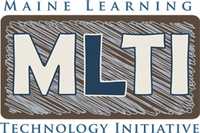Part 2 of 4
The school system in Scarborough has seen many changes over the past 352 years. To demonstrate to you how far we have come in education, Scarborough Middle School students invite you to travel back in time to witness the evolution of a variety of things found in any Scarborough classroom today.
Extra Curricular
Danielle, grade 6
The Scarborough School System’s extracurricular activities have changed and grown since an early start. At first, the schools offered very few extra-curricular activities. One of the first few was a prize declamation which offered students a chance to compete and win prizes by singing, reading, or reciting poems or other pieces. Schools from Beech Ridge, Oak Hill, and Dunstan participated in the event, with one hundred and eighty-five people attending. By the 1920’s, the schools had formed a school orchestra, agricultural clubs, a senior fair and drama production, public speaking contest, and a girl’s club.
By the 1950’s, Scarborough’s extracurricular opportunities flourished, with student council, 4-H, a hobby club, a junior Red Cross organization, and a French Club. Many clubs competed and won awards. They had a girl’s glee club, boasting around sixty members, and a boy’s glee club, with fifteen. Thespian students could participate in one-act plays, and in the 1950’s, the high school added the Future Homemakers of America, National Honor Society, a band, and a choir. With the 1960’s came a medical club, a junior rescue organization, a ski club, pep club, future teachers of America, and a volunteer production staff.
Today, we have a wide range of sports, clubs, and activities to choose from, including student council, drama club, chess club, various music clubs and a chorus, academic extra-curricular activities, and many, many, more.
Heat
Connor, grade 6
Schools have not always had adequate heating, in fact, some schools didn’t have heat at all. In Scarborough at 350: Linking the Past to the Present, Elaine Frederick Killelea recalled the heating conditions at Black Point School in the 1930s. She said, “Each year the lavatory and drinking fountain at the front of the classroom froze in December and remained frozen until April.” Heating in schools was provided by a potbelly stove in the back of the classroom. The children closest to the heater were uncomfortably warm and had trouble fighting off drowsiness. The corners and front of the room were so cold students had to wear multiple layers of clothing and sometimes even a hat. The oldest boy was appointed the janitor and had to arrive at school early, bring in the wood or coal and keep the fire going throughout the day. In 1938 an eight grader named Harold “Scoot” Richardson was the janitor for Black Point School and according to the Scarborough Town Report he was paid $9 for the year for this service.
Today, heat in the schools is automated and overseen by the facilities director for the school department. Luckily, students are no longer required to play a role in the process of keeping the school warm.
Technology
John, grade 6
Technology in the schools is constantly evolving. In the late 1700s, 1800s, and early 1900s, schools didn’t have computers, or high-quality projectors, or several televisions. They had to do everything by hand or with bad quality. They only had abacuses (old-fashioned calculators), stereoscopes (a hand-held viewing instrument that created three-dimensional images of landscapes, plants and animals), low-quality televisions, radios, and projectors.
Most of the technology found in schools of the past seems archaic to us. In Scarborough at 350: Linking the Past to the Present Rodney Laughton described watching a movie, “Occasionally, we saw a ‘film strip,’ similar to a slide show; watching a movie was always a big event. The teacher rolled a large, bulky projector on a cart into the classroom. The movies were reel-to-reel and usually featured newsreel type productions.” Nowadays, we have 1:1 laptop access, TVs, high-quality DVD or CD players, and LCD projectors. All of these technological tools are essential for teachers and students on a daily basis.
Discipline
Olivia, grade 6
During the 17th and 18th centuries, discipline was much different than nowadays. There were many different forms, but all resembled one another. In the early 1800s, many schools used wooden canes if a child misbehaved. Soon after in the 1850’s the leather strap and hickory switch were introduced to classrooms across the country. These tools were primarily used as motivation to behave and were often kept behind the teacher’s desk. They were there just to let children know what could happen if they needed to be taught a lesson different from what was being taught in class that day.
If children only mildly misbehaved, doing things such as disrupting class or talking out of turn, there would be a few consequences. Either their desk would be moved into the corner of the room and they would have to stay there for the remainder of the day, or they would have to stand in the corner facing the wall. If there was a problem on the playground the child who caused it would be sent in for the rest of recess. Big issues usually never arose but if they did the teachers knew how to handle them. In Scarborough at 350: Linking the Past to the Present, Rodney Laughton explained how teachers kept order at Oak Hill Primary in the 1960s. They told us to “sit up straight and fold your hands.”
Nowadays discipline is much different in Scarborough schools. Instead of physical punishment children are given punished verbally or given a written slip. Warning slips are given out for not being prepared for class, and if you were to break the rules in a bigger way you may have to serve detention. If you are mildly misbehaving a teacher may pull you out into the hall or speak at you in front of the class. Discipline has changed very much in the last 200 years, and it is still being modified slightly every year to encourage acceptable behavior.
Transportation
Andy, grade 6
Student transportation, also known as the school bus, has been very important in Scarborough for may years. At first, most students walked to school, but some students rode a bus, a bus that was very different from today’s busses. In Scarborough 350: Linking the Past and The Present Margery Miliken tells about taking the bus to Dunstan School in the 1920s.
“We had the first school bus in town, pulled by a team of horses. The conveyance, built of wood, was rectangular in shape with seats along either side facing each other. The door was in the rear and the driver seat up front. Mr. Small drove the team of two horses with the reins going out through a small opening. Fall and spring it traveled on wheels and in the winter on runners.
The number of school children riding school buses in Scarborough has risen dramatically since then and the standard yellow school bus delivers students to and from school daily. Currently, Scarborough has 29 school buses in its fleet




